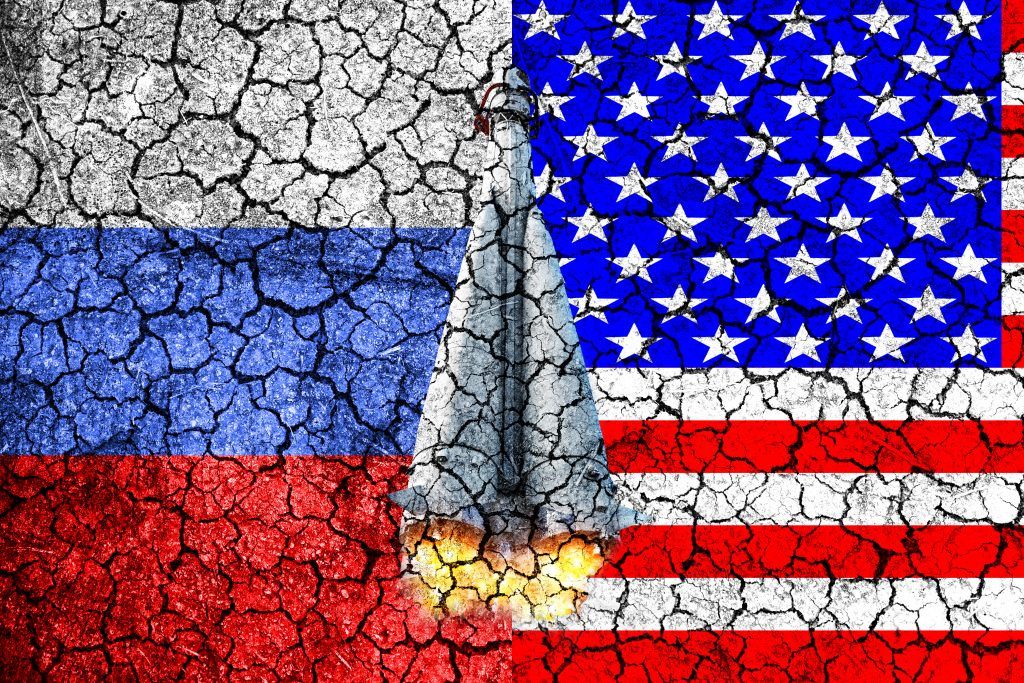START from the basics to maintain nuclear stability
By Aaron J. Bonovitch | January 30, 2018

Crimea. Syria. Hacking. Sanctions. Each day that goes by, the rift between the United States and the Russian Federation widens. The two countries have reached a critical point in bilateral relations, yet few people are talking about one looming threat: the expiration of New START (formally known as the Treaty between the United States and the Russian Federation on Measures for the Further Reduction and Limitation of Strategic Offensive Arms) at the end of 2021. Due in part to deteriorating relations between the United States and Russia, it can no longer be assumed that this nuclear weapons treaty will be renewed.
Signed in 2010, New START represents years of diplomatic hard work toward creating a stable and reliable nuclear relationship, but the United States and Russia seem to be adversaries again. While some might suggest that allowing New START to expire—or canceling it without some form of replacement—would be an appropriate response to the increasing hostility, that would be a catastrophic mistake. Now, more than 25 years removed from the Cold War, many may not see the potential risks to allowing the treaty to expire.
More than just numbers. New START is a follow-up to the Strategic Arms Reduction Treaty (START) signed in 1991. The original treaty’s name implies that it simply reduces the numbers of nuclear weapons, but in fact it also permits both countries to collect data on the movements and locations of weapons. Treaty provisions allow inspectors from both Russia and the United States to conduct 18 short-notice, on-site inspections each year. These inspections allow the two countries to verify each other’s declarations by visiting deployed and non-deployed nuclear weapon sites.
Having boots on the ground in Russia allows US inspectors to verify that the Russian government is being truthful about the types and locations of its weapons. In addition, safe and secure handling of these mostly aging weapons remains a top priority, and one best observed in person. Relying on rival countries to take each other at their word is a tricky business—and one that these two countries have never been keen on doing.
Despite other disagreements, both sides have taken full advantage of the opportunity for inspections. According to the State Department, each country has maxed out its yearly inspections for the first six years of the treaty—without one instance of noncompliance. This has helped to build a foundation of trust that can serve as a basis for further discussion, even on other issues.
Stability and transparency. As a missile operator, I know firsthand just how quickly decisions happen in nuclear scenarios. The president has little time to decide how, or if at all, to act in the event of a nuclear attack on US soil. This urgent decision-making is only hindered by a lack of transparency between the two powers.
Without bilateral verification and monitoring procedures, the United States could certainly still do its part to track Russian warhead movements or launches via national technical means, such as satellite imagery. The US president could also attempt to contact the Russian government to verify actions over the phone. However, the verification and monitoring mechanisms in New START give both sides access to certain telemetry, or missile flight test, data. If Russia launched an ICBM, the US president would already possess valuable information about a weapon’s flight path because of this telemetry data.
In addition, the rapid deployment of inspectors to each country helps prevent either side from lying about the use and placement of its weapons. For example, Russia would hesitate to lie about moving a warhead if it knew that US inspectors could show up to verify within just a few days. This adds a layer of stability by deterring rapid or concealed movement that would potentially drive the other side to a higher alert level, and makes it easier to distinguish between a false alarm and a nuclear first strike.
If New START lapses at the end of 2021, it will be essential to maintain nuclear transparency between Russia and the United States for the sake of global security. If the relationship between the two countries continues to fray, potentially resulting in a conventional conflict, the world cannot afford a breakdown in stability and predictability—particularly in the nuclear arena. Absent a New START extension, the two countries will need an agreement that allows for continued transparency, including on-site inspections and data exchanges. This will be a challenge.
The divide between the two countries may widen further before treaty concerns come to the forefront of US policymakers’ agendas. For example, if Russia increases its stockpile after New START expires, that may be a driving factor for the United States to be more amenable to negotiations. Both sides must be able to get point-blank confirmation that the other is acting in a stable manner and is being truthful about its actions. Further agreements can be negotiated based on this platform, but inspections should be the bare minimum agreement.
Learning from the past. The United States cannot afford to lose bilateral nuclear monitoring and verifications. The Intermediate-Range Nuclear Forces (INF) Treaty restrained Russian and US nuclear forces in Europe for years but now faces strain, with the United States claiming that Russia has violated the treaty by developing a new ground-launched missile with an extended range. Russia has denied the charge and raised allegations of its own.
From the standpoint of defending core national interests, intermediate forces are not the primary strategic threat to the US homeland. However, the INF Treaty may still be vital to both countries in further talks, as a lesson from past successes. During the 1980s, Russia withdrew from negotiations over nuclear arms, partly in response to US nuclear forces in Europe and the Strategic Defense Initiative implemented in the early 1980s. As the arms race kicked off yet again, both countries returned to the negotiating table and broke down the negotiations into three categories: intermediate-range weaponry, strategic forces, and missile defense. Starting with intermediate forces, the bilateral INF agreement was signed in 1987, paving the way for talks on strategic weapons.
Considering the current strain over the INF Treaty, New START may be politically impossible for the two countries to renew. Nevertheless, no US administration should give up on-site nuclear monitoring and verification programs with Russia. Even if the United States and Russia are on the precipice of a second Cold War, no leader should undermine nuclear predictability and stability. This means that both sides will need to learn from the past.
During the 1980s, a short arms race helped push further talks, but a doctrine of using a nuclear weapon to stop a conventional attacking—what the Russians call “escalating to de-escalate”— remains a dangerous policy. If New START expires, the United States should not suddenly begin building up its arsenal or implementing any policies that may be seen as aggressive toward Russia. Instead, diplomats must reach out to the other side with an open mind.
The world of today is very different than the days of the INF Treaty and START. The categories up for negotiation may need to be altered. As seen in previous years, treaty negotiation will require baby steps. Smaller, easier treaties may be needed as the two countries rebuild relations. Perhaps a third START agreement is not the answer, but the end goal should not change: to have verification and monitoring procedures in place. Without them, global stability and security are once again at risk.
Together, we make the world safer.
The Bulletin elevates expert voices above the noise. But as an independent nonprofit organization, our operations depend on the support of readers like you. Help us continue to deliver quality journalism that holds leaders accountable. Your support of our work at any level is important. In return, we promise our coverage will be understandable, influential, vigilant, solution-oriented, and fair-minded. Together we can make a difference.
Topics: Nuclear Weapons, Voices of Tomorrow















